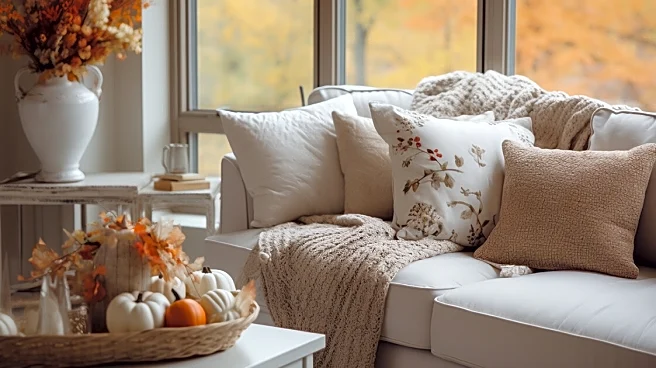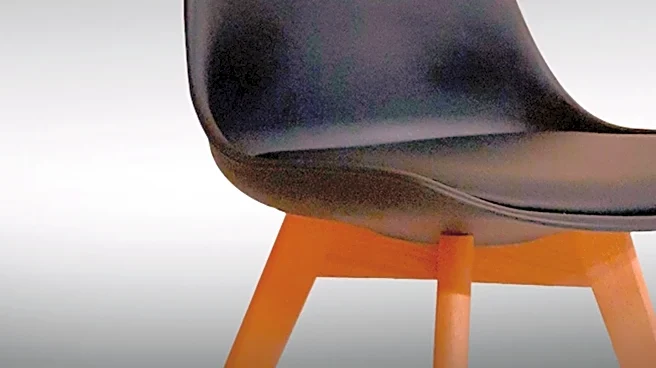What's Happening?
The half-tester bed, a style that dates back to the early Renaissance, is experiencing a revival in modern interior design. Historically, these beds were an economical alternative to full canopy beds,
offering a similar luxurious appearance without the high cost. Today, designers are embracing the half-tester bed for its ability to transform a bedroom into a space of comfort and nostalgia. According to design historian Alessandra Wood, the half-tester style became popular during the Victorian era as a cost-effective option for lavish designs. Texas-based designer Cathy Kincaid Hudson notes that the current versions of half-tester beds can cost less than half the price of traditional canopy beds, making them an attractive choice for homeowners seeking affordable luxury. Designers like Philip Hooper and Tiffany Duggan emphasize the aesthetic appeal and nostalgic comfort these beds bring to modern interiors, aligning with the grandmillennial trend that favors classic English aesthetics.
Why It's Important?
The resurgence of half-tester beds highlights a broader trend in interior design where consumers are increasingly drawn to styles that evoke nostalgia and comfort. This trend reflects a shift towards traditional aesthetics, as seen in the grandmillennial movement, which embraces designs from the 1980s. The affordability of half-tester beds makes them accessible to a wider audience, allowing more homeowners to incorporate luxury elements into their spaces without significant financial investment. This revival also suggests a growing appreciation for historical design elements, which can influence future trends in home decor. As designers continue to modernize these beds, they offer a versatile option that can fit both traditional and contemporary interiors, potentially impacting the furniture market and consumer preferences.
What's Next?
As the popularity of half-tester beds grows, designers may explore new ways to integrate these beds into various interior styles, balancing traditional and modern elements. This could lead to innovative designs that appeal to a broader demographic, including younger homeowners who are interested in blending classic and contemporary aesthetics. The trend may also inspire manufacturers to produce more affordable luxury furniture, expanding the market for high-quality, cost-effective home decor. Additionally, the revival of historical design elements could encourage further exploration of other vintage styles, potentially influencing future trends in interior design.
Beyond the Headlines
The revival of half-tester beds not only reflects a trend in interior design but also highlights cultural shifts towards valuing historical aesthetics and craftsmanship. This movement may encourage a deeper appreciation for the artistry involved in traditional furniture making, potentially leading to a resurgence in artisanal craftsmanship. As consumers seek out unique and personalized home decor, there may be increased demand for custom-made furniture that incorporates historical design elements. This could foster a greater connection between consumers and the history of design, influencing how people perceive and value their living spaces.














